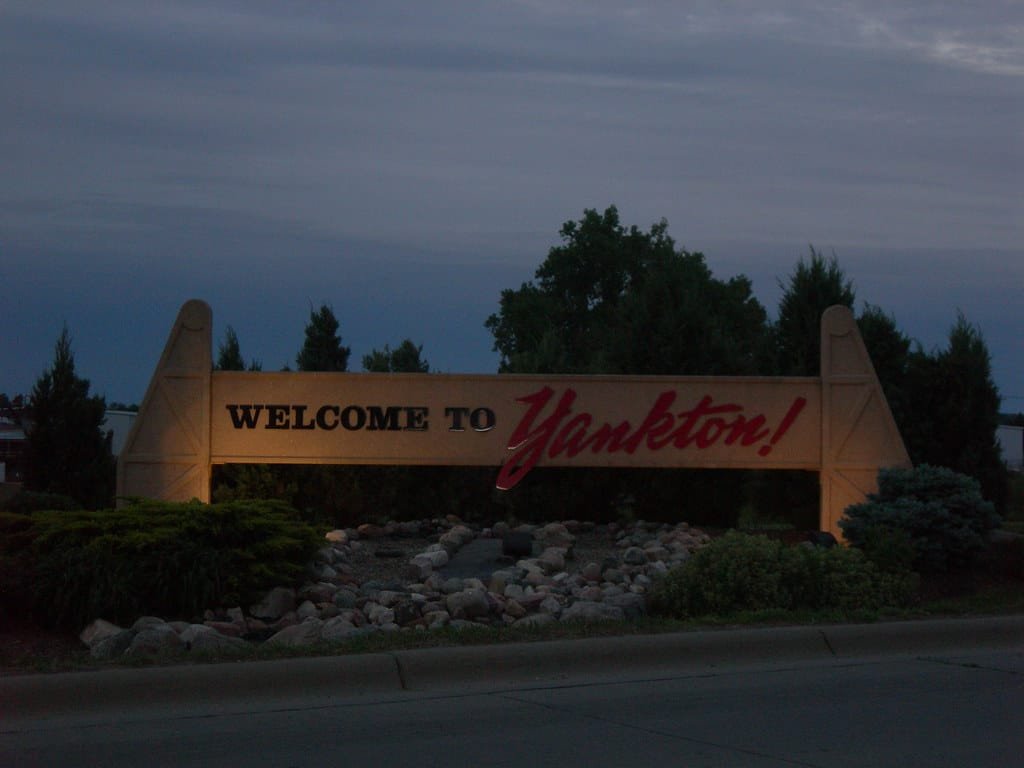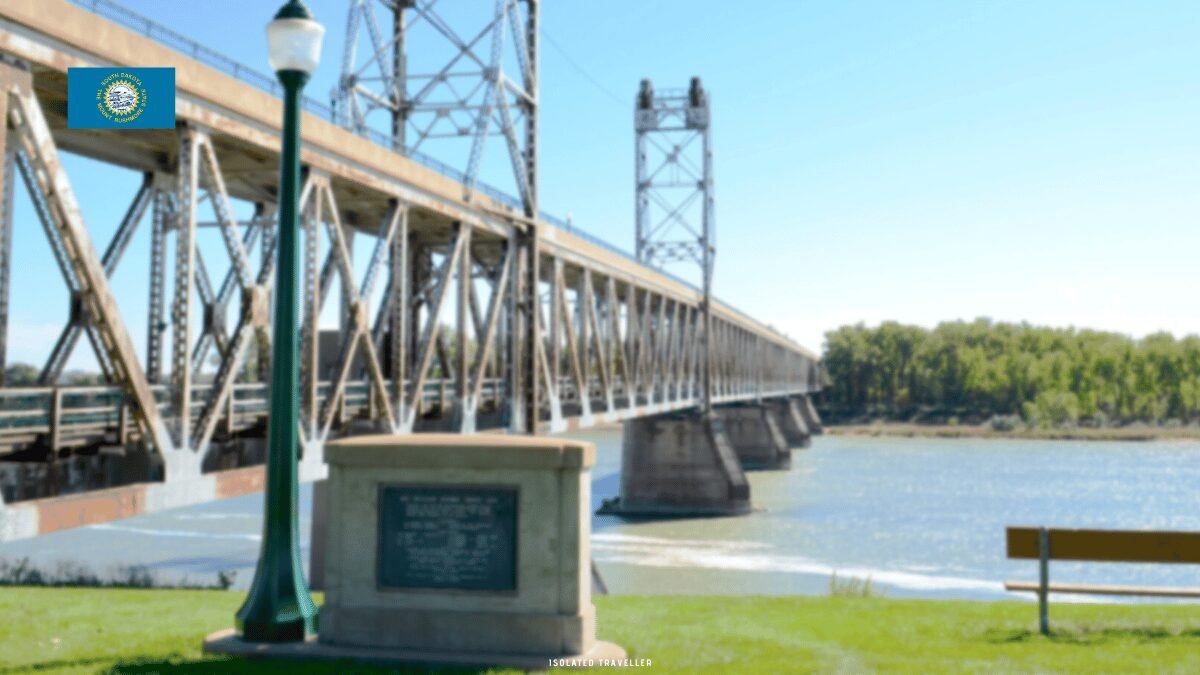Yankton, South Dakota
Yankton is a city located in the southeast corner of South Dakota. The city is situated on the banks of the Missouri River and is surrounded by a mix of prairie and wooded areas. It is the county seat of Yankton County and has a population of around 15,000 people as of 2021.
The city has a rich history dating back to the 1800s and was an important location for trade and commerce during the late 19th century, due to its location on the Missouri River. In 1861, the Dakota Territory was established and Yankton was named as the capital of the territory. However, in 1889 the capital of the Dakota Territory was moved to Bismarck and Yankton’s role as a regional centre of power and influence diminished.
Today, Yankton’s economy is diverse and has a mix of different industries, primarily based on manufacturing, healthcare, and retail. The city also has a strong agricultural base, providing jobs and supporting the local economy. The city has a humid continental climate with cold winters and warm summers, with an average temperature range from -5F during winter to 90F in summer.
Yankton is home to several historical sites and monuments, such as the Dakota Territorial Capitol, and several parks and outdoor recreational areas like Riverside Park and Lewis and Clark Recreation Area. The city is also home to the University of South Dakota, Yankton campus, which offers a variety of undergraduate and graduate programs. Additionally, Yankton is host to several annual events and festivals, such as the Yankton Riverboat Days and the Yankton Area Arts Festival. The city offers a variety of attractions and activities, from outdoor recreation and the arts to shopping and dining, there’s something for everyone to enjoy in this vibrant city.

Geography Of Yankton
Yankton is located in the southeast corner of South Dakota, on the banks of the Missouri River. The city is situated in the rolling hills of the Loess Hills region and is surrounded by a mix of prairie and wooded areas.
Yankton is located in the Yankton-Vermillion Micropolitan Statistical Area, which encompasses both Yankton and Vermillion. The area is known for its rich agricultural land, and the economy is primarily based on farming and ranching.
The city is situated at the confluence of the Missouri River and the James River, and it is located near several other rivers, including the Big Sioux River and the Vermillion River. The city is also located near several state parks and recreational areas, such as Lewis and Clark Lake, Gavins Point Dam, and the Lewis and Clark Recreation Area.
Yankton is situated at an elevation of 1335ft above sea level, and the total area of the city is 8.47 square miles. The city has a humid continental climate with four distinct seasons. The temperature ranges from -5F during winter to 90F in summers, and the city receives an average of 27 inches of precipitation per year.
Yankton Economy
Yankton’s economy is diverse and has a mix of different industries. The city’s economy is primarily based on manufacturing, healthcare, and retail.
Manufacturing is one of the largest industries in Yankton. The city is home to several large manufacturing companies, including Raven Industries, a leading producer of technical products such as precision agriculture equipment, and Dakota Manufacturing Inc. which manufactures custom-made steel products. The city’s skilled workforce, low-cost utilities and the availability of land have attracted many manufacturing businesses to establish in the region.
Healthcare is also an important industry in Yankton. The city is home to several medical clinics, hospitals, and nursing homes. Avera Sacred Heart Hospital is one of the major employers in Yankton, providing a wide range of healthcare services to the local community.
Retail is another important industry in Yankton, providing jobs and supporting the local economy. The city has a mix of both small and large retail stores, and the downtown area is home to many speciality shops and boutiques. The city is also home to several large retail centres, including the Meridian Mall and the Lewis & Clark Plaza.
The city also has a strong agricultural base, providing jobs and supporting the local economy. The fertile land in the area is well suited for growing crops such as corn, soybeans, and wheat, as well as raising livestock.
Additionally, Yankton is home to several government buildings and offices, such as the Yankton County Courthouse, which also provides jobs and supports the local economy. The city’s location on the banks of the Missouri River has historically made it an important location for trade and commerce.
In summary, Yankton’s economy is diverse and has a mix of different industries. The city’s skilled workforce, low-cost utilities, and availability of land have attracted many businesses and industries to establish in the region and provide opportunities for growth and development.
Climate Of Yankton
Yankton has a humid continental climate, which is characterized by cold winters and warm summers. The city is located in the transition zone between the humid continental climate of the Midwest and the semi-arid climate of the Great Plains.
In terms of temperature, Yankton has a wide range of temperatures, with cold winters and warm summers. The average high temperature in the summer months (June, July, August) is around 83 degrees Fahrenheit (28 degrees Celsius), while the average low temperature in the winter months (December, January, February) is around 7 degrees Fahrenheit (-14 degrees Celsius). The temperature can reach below 0 degrees Fahrenheit or -18 degrees Celsius on the coldest days of winter.
Precipitation in Yankton is fairly consistent throughout the year, with an average of 27 inches (68.5 cm) of precipitation per year. The city receives most of its precipitation in the form of rain, but it also gets some snowfall during the winter months. The city typically receives around 20 inches (51 cm) of snowfall per year, which mainly occurs from November to April.
In terms of wind, Yankton is located in an area that is prone to strong winds, particularly in the spring and fall seasons. These winds can occasionally reach up to 50 mph (80km/h) and can cause damage to buildings, and power lines and make travel difficult.
In summary, Yankton has a humid continental climate with cold winters and warm summers. The temperature range is wide throughout the year, and the city receives an average of 27 inches of precipitation per year, mostly in the form of rain, but with some snowfall during the winter months. The city is also prone to strong winds, particularly in the spring and fall, which can occasionally reach up to 50 mph.
History Of Yankton

Yankton is a city in the southeast corner of South Dakota that has a rich history dating back to the 1800s. The city was named after the Yankton Sioux tribe, which had inhabited the area for centuries before European settlers arrived.
In 1804, the Lewis and Clark Expedition passed through the area on their journey to explore the American West. The expedition documented the presence of the Yankton Sioux tribe and the abundant wildlife in the area.
In 1859, the city of Yankton was founded by European settlers, who established the first permanent settlement in the area. The city quickly grew as a regional centre for trade and commerce, thanks in part to its location on the banks of the Missouri River. Steamboats were a common sight on the river in the late 19th century, and the city served as an important hub for transportation and trade.
In 1861, the Dakota Territory was established, and Yankton was named the capital of the territory. The city continued to grow and prosper, with the construction of new buildings, homes, and businesses. However, in 1889, the capital of Dakota Territory was moved to Bismarck, and Yankton’s role as a regional centre of power and influence diminished.
During the 20th century, Yankton’s economy shifted from being based on trade and transportation to being based on manufacturing and agriculture. The city’s location near the Missouri River and the fertile land in the area made it an ideal location for manufacturing, and the city attracted a number of factories and plants. The city also continued to have a strong agricultural base, with farming and ranching being major sources of income for many residents.
Throughout the decades, Yankton remained a vital and prosperous city, also providing educational opportunities with the establishment of the University of South Dakota, Yankton campus. Today, Yankton is a vibrant city that celebrates its rich history while also looking towards the future, and many of its historical sites and monuments are well preserved and open to visitors.
Yankton and nearby Attractions
Yankton is a city located in the southeast corner of South Dakota that offers a variety of attractions and activities for visitors to enjoy. Some of the notable nearby attractions include:
- The Dakota Territorial Museum: This museum is housed in the former Dakota Territorial Capitol building and provides visitors with a glimpse into the history of the Dakota Territory and the city of Yankton. The museum features exhibits on the local Native American tribes, the Lewis and Clark Expedition, and the history of the city and the state of South Dakota.
- The Meridian Bridge: This historic bridge spans the Missouri River and connects Yankton to Nebraska. The bridge was built in 1930 and was the first bridge to cross the Missouri River in South Dakota. Visitors can walk or bike across the bridge for a great view of the river and the surrounding landscape.
- The Lewis and Clark Recreation Area: This state park is located just north of Yankton on the shores of Lewis and Clark Lake. The park offers a variety of recreational activities, including camping, fishing, boating, and hiking. The park also features a visitor centre and several picnic areas.
- Riverside Park: This park is located along the Missouri River and offers a variety of recreational activities, including fishing, picnicking, and a playground area. Visitors can also take a walk along the riverfront trail, which provides great views of the river and the surrounding landscape.
- The Yankton Area Arts Festival: This annual festival is held in downtown Yankton and features a variety of art and craft vendors, live music, and food vendors. The festival is a great way to experience the city’s arts and culture scene.
- The University of South Dakota, Yankton Campus: The campus provides various undergraduate and graduate programs. The campus has facilities like residence halls, a library, a student centre, sports facilities and more.
- Yankton Trail Park: The park has a great network of trails for hiking, biking and running. It also features a playground, a picnic area, and a fishing pond.
- The Yankton Mall: is a shopping centre in the city, with big box stores, local and chain restaurants, and a cinema.
These are just a few examples of the many attractions and activities available in and around Yankton. Whether you’re interested in history, outdoor recreation, or the arts, there’s something for everyone to enjoy in this vibrant city.
Related articles


